Introduction to the Pahlavi Dynasty
The last dynasty of the Iranian imperial system was the Pahlavi dynasty, which began in 1925 A.D and continued until 1978 A.D in Iran. The Pahlavi Dynasty came to power with the efforts of Reza Khan Pahlavi, who founded it and ruled for 16 years. Finally, in 1978 A.D, Pahlavi dynasty was abolished.
When Ahmad Shah, the last Qajar king, left Iran for a trip and Reza Khan, as prime minister, took charge of the country alone, he paved the way for the rise of the Pahlavi dynasty and the fall of the Qajar dynasty. Finally, on 31 October 1925 A.D, Reza Khan Pahlavi put pressure on the members of the Fifth National Assembly to propose a single article, according to which Ahmad Shah was removed from the monarchy, and the government was handed over to Reza Khan Pahlavi. From then on, Reza Khan ruled Iran under the name Reza Shah, and on 25 April 1926 A.D, his coronation ceremony was held.

Founder of Pahlavi Dynasty (Reza Shah Pahlavi)
Reza Shah Pahlavi undertook a coherent plan to organize the executive and economic situation of the country. At the beginning of his reign, Iran lacked an administrative system, a cohesive army, communication channels, and a modern banking and economic system. He ascended the throne from 1925 to 1941 A.D, and during this period, he tried to make Iran a modern country.
Reza Shah Pahlavi ruled with perfect authority. Many historians call him a strict dictator, and others consider his dictatorial personality a prerequisite for the conditions of that day in Iran. During the reign of Reza Khan Pahlavi, Iran was a country where people from its different areas wanted to separate their province from Iran. So, the country needed a superior power to organize all the irregularities.
In 1941 A.D, World War II broke out in Europe. At the same time, talks and negotiations took place between Reza Shah Pahlavi and Adolf Hitler, which was not to the liking of the British. On 25 August 1941 A.D, Soviet forces entered Iran from the north and British forces from the south. As a result, Tehran was occupied by Soviet and British powers. After the capture of Tehran, Reza Shah Pahlavi was deposed and exiled to Mauritius. After a while, he moved to Johannesburg and remained in the city for the rest of his life. Finally, he died on the 26 July 1944 A.D.

Among Reza Shah’s actions in Iran:
- Establishment of a new army to maintain the independence and integrity of the country and ensure public security and air force, navy in the waters of the Persian Gulf and the Oman and Caspian Seas, the establishment of Madrese-ye Nezam (a military academy) in Tehran and Kermanshah, and other cities, the establishment of an official college, students dispatch Military to European countries
- Implement the law of the public service system in all parts of the country.
- Development of culture and public education, the establishment of primary and secondary schools in a new style, the establishment of the first university in Iran called the University of Tehran, Technical college, and National Library.
- Construction of the first national railway in Iran from the Caspian Sea to the Persian Gulf.

- Sending many excellent students abroad to acquire new knowledge with government funding.
- Construction of the first aircraft factory in the country by purchasing German aviation licenses.
- Construction of the first important airport in the country called Mehrabad Airport in 1939 A.D.
- Construction and development of communication roads in different cities and regions throughout the vast country of Iran, construction of the first road tunnel in Kandovan, the building of the Veresk Bridge, and construction of the Chalus Road.
- Expansion of communication and telecommunication means in the country and establishment of telecommunication faculty.
- Creating security in cities and roads, confronting bandits and insurgents, and suppressing them.
- Mandatory surname for every Iranian and issuance of identity card for the uniqueness of each person and establishment of the General Office of Statistics and Civil Registration.
- Creating the first excavations on Persepolis.
- Converting the country’s currency into Rials.
- Changing Iran’s official name in international forums from “Persia” to “Iran” in 1935 A.D and determining the date from the Lunar Hijri calendar to the Solar Hijri calendar.
- Establishing the law of administrative divisions of the country into provinces, cities, and districts and the limits of their powers and duties. Titles such as exarch, governor, prefect, and mayor also became commonplace.
- Reforming tax affairs and public budget, regulating the financial, banking, foreign exchange, and monetary affairs of the country.
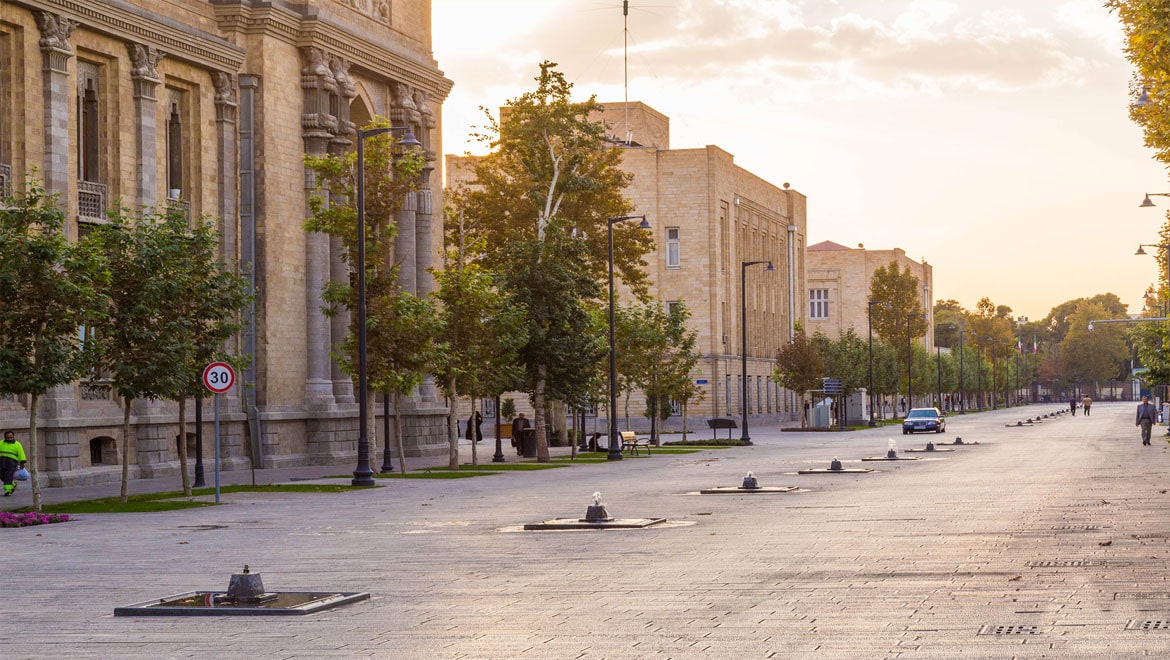
There was no Iranian bank, and money was traded by some trading houses such as Toumanians Trading House. Also, there were several foreign banks, such as the Royal Bank of England, the Russian Borrowing Bank, and the Ottoman Bank. In 1925 A.D, the Sepah Bank was established to regulate the army’s finances. After that was Bank Melli Iran, which was opened in 1928 A.D, and the first series of Iranian banknotes was issued by the Bank Melli in 1932 A.D. Then the Keshavarzi Bank in 1932 A.D and the Rahni Bank in 1938 A.D was established and started working.
- Improving the situation of farmers
- Reforming the judiciary in the style of developed countries by enacting legal and criminal laws and procedures following the religious norms and law of European countries while using the elite of seminaries, graduates of domestic and foreign law, and the establishment of a judicial class.
- The installation of a real estate registry office, establishment of notary offices, and marriage and divorce offices to establish the rights of individuals and guarantee the correctness of transactions.
- Improvement of municipal affairs, construction of streets and squares, development of old roads, and strict and continuous supervision in tree planting, cleaning municipal waste, construction of municipal buildings, and financing.
- Religious minorities were free to perform religious duties and slogans and enjoyed equal social rights as other Iranian citizens.
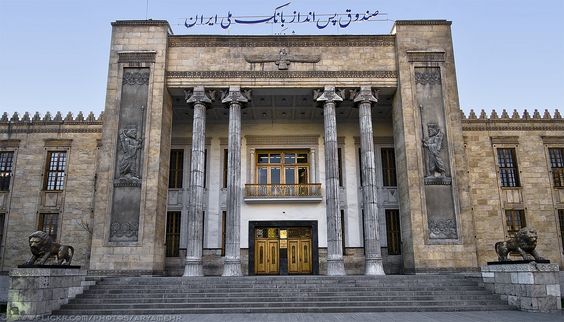
During the Last King of Pahlavi Dynasty (Mohammad Reza Shah)
After Reza Shah’s exile, this time was his son’s turn to take power in Pahlavi dynasty. Mohammad Reza Shah Pahlavi was born on 27 October 1919 A.D in Tehran. He was crowned on 16 September 1941 A.D. Mohammad Reza Shah studied in Switzerland and returned to the country after obtaining the rank of the second lieutenant from the officer’s college. Mohammad Reza Pahlavi, like his father, did many things in Iran during his 37-year reign.
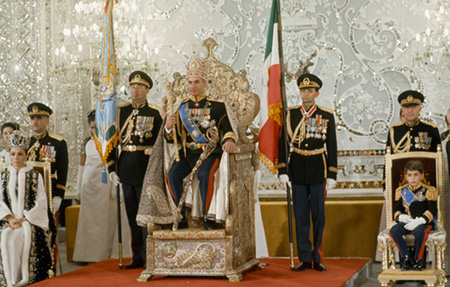
Some of these measures are in the last king of Pahlavi dynasty:
- Construction of Shahyad Square and Tower (current Azadi Square and Tower) as a symbol of Iran.
- Construction of the Olympic Village and Aria Mehr Sports Complex in Tehran (current Azadi Complex) to hold the 1974 A.D Asian Games, which includes a 100,000-seat football stadium, a 12,000-seat hall, shooting ranges, a skating rink, a racetrack, a motorcycle track, and a lake (for all kinds of water sports), and a karting track. The complex also holds five halls, including a basketball hall, volleyball hall, weightlifting hall, wrestling hall, and women’s hall. Also, it contains tennis courts, a national football team camp, an equestrian complex, an Azadi pool, a cycling stadium, several football fields, a baseball field, cricket, and the health road (the path around the lake).
- The establishment of Iran Airlines (Homa), the oldest airline in the Middle East.
- Establishment of the national power of Iran over the islands of Greater Tunb (Tonb-e Bozorg), Lesser Tunb (Tonb-e Kuchak), and Abu Musa and the establishment of authority and national sovereignty of Iran and the Imperial Navy in the Persian Gulf.
- Liberation of Azerbaijan and Kurdistan and suppression of Soviet-backed separatist groups in Iran.
- Holding celebrations of the 2500th anniversary of the empire to show the unique history and glorious cultural background of Iran in the international arena.
- Conducting the White Revolution and its 19 principles, such as land reform and ending the ruling landlord system in Iran, the nationalization of Iran’s forests and pastures, the nationalization of the country’s waters, the workers’ share in the net profits of industrial and manufacturing factories, the establishment of the IRGC Health, Knowledge Corps and Extension and Development Corps.
- Free and compulsory education for everyone.
- Free feeding for young children in schools and free feeding infants up to two years old with mothers.
- Coverage of public social insurance for all Iranians.
- Establishing the intellectual development centre for children and adolescents to fill the gap in cultural works and products for children and adolescents in Iran.
- Amend the Iranian election law and grant women the right to vote and equal political rights with men.
- Changing the origin of Iran’s history, from the solar Hijri to the beginning of the reign of Cyrus the Great.
- Increasing the level of the military power of the Iranian army to one of the most mighty and superior military powers in the Middle East and the world. Mohammad Reza Pahlavi had earmarked a large budget for equipping and training the Imperial Iranian Army. In this regard, equipment was purchased from the United States and other countries. During this time, the Royal Iranian Air Force became one of the most potent forces in the world.
- Establishment of OPEC (Oil Exporters Association) and its chairmanship.
- Establishment of the Aria Mehr University of Technology (now Sharif University of Technology), Tehran Polytechnic (now Amirkabir), the Aria Mehr University of Technology Isfahan (now Isfahan University of Technology), the National University of Iran (now Shahid Beheshti University), Farah Pahlavi University (now Al-Zahra University), University Pahlavi (now Shiraz University), Jundishapur University (now Shahid Chamran University).
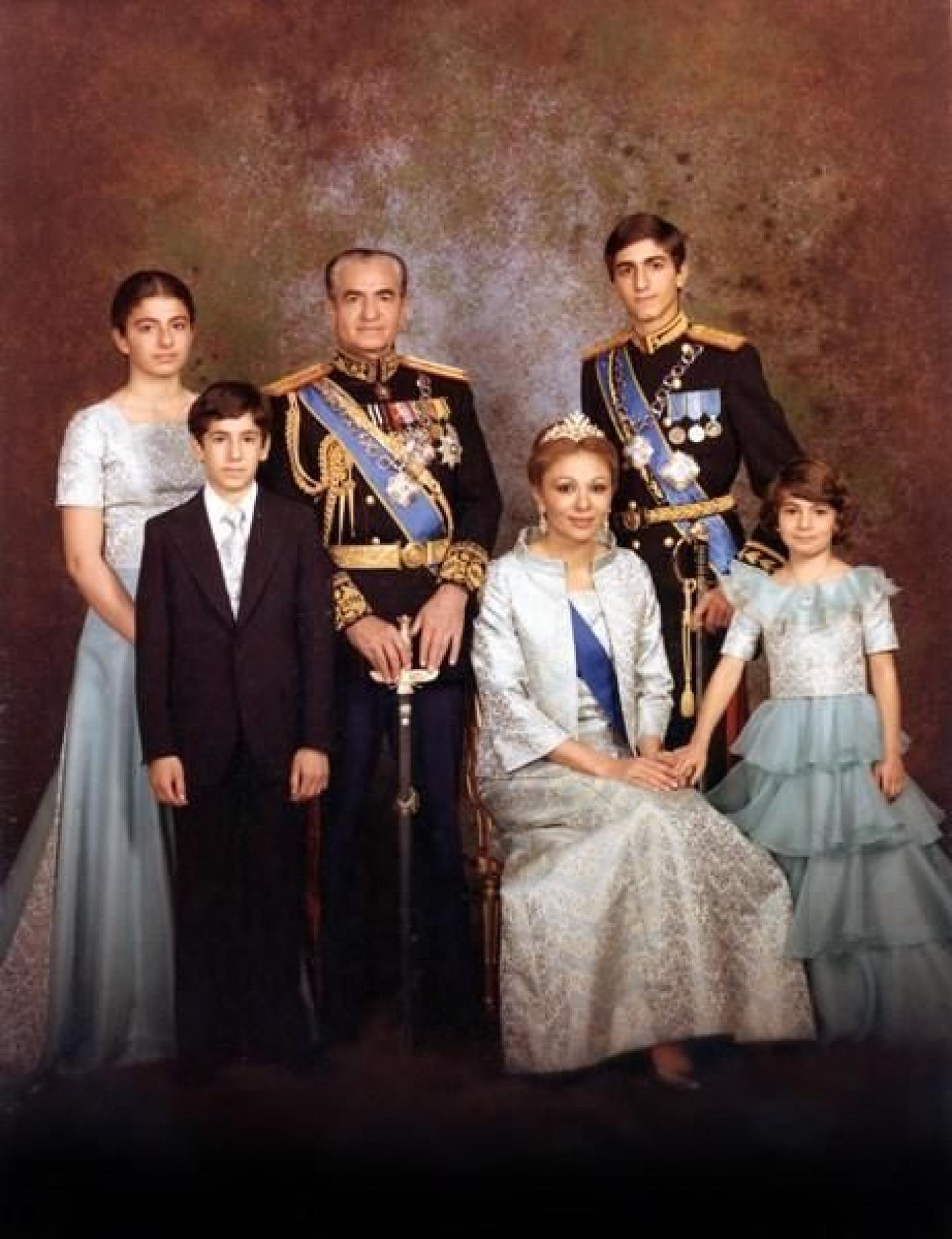
Pahlavi Dynasty Symbol is Shahyad Tower (Current Azadi Tower)
The history of Shahyad Tower dates back to 1966 A.D. This year, designing an Iranian identification symbol was put up for competition among Iranian architects. Finally, the plan of 24-year-old Engineer Hossein Amanat, a graduate of the Faculty of Fine Arts, University of Tehran, won and was selected for construction. The building of Azadi Tower began on 2 November 1969 A.D, and after twenty-eight months of work, has put into operation on 14 January 1972 A.D, under the name of Shahyad Tower. Mohammad Reza Shah Pahlavi and his wife, Queen Farah Pahlavi, attended the opening ceremony of the tower, which is located on the west side of Tehran. Also, the Charter of Human Rights of Cyrus the Great (the first human rights record of Cyrus the Great, the Achaemenid king) was unveiled here for the first time.
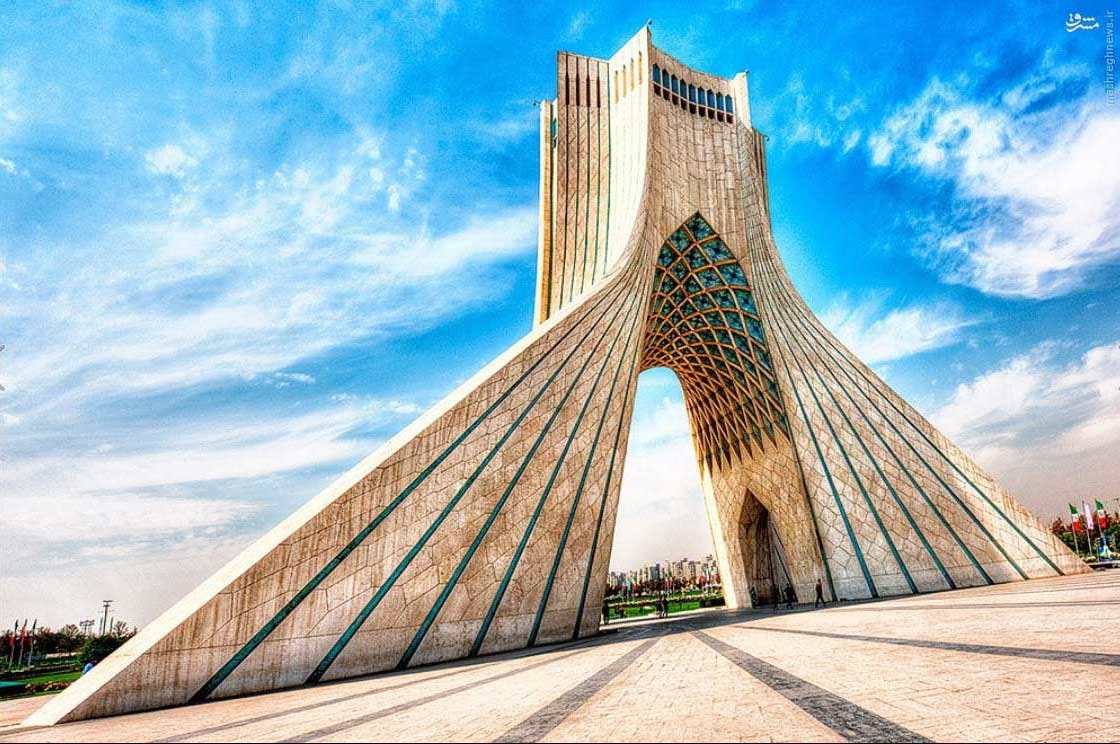
Aria Mehr Stadium (Current Azadi Stadium)
Aria Mehr Stadium is the national stadium of Iran and the largest stadium in the country. The stadium was built to host the 1974 A.D Asian Games during the reign of Mohammad Reza Shah Pahlavi. The stadium is part of the Azadi Sports Complex. Most of the games of the Iranian national football team and the Tehran teams of the Iranian Football Premier League are held in the stadium.
Azadi Stadium was designed by Abdol-Aziz Farmanfarmaian and opened on 18 October 1971 A.D. Before the revolution, the stadium was named Aria Mehr in honour of Mohammad Reza Shah Pahlavi, and then it was renamed Azadi. Tehran Azadi Sports Complex is one of the largest sports complexes in Asia, with multi-purpose halls, a 12,000-seat hall, and an artificial lake.

2500th-Anniversary Celebrations of the Persian Empire
The 2500th anniversary of the Iranian Empire is the name of a series of celebrations, which were held in Persepolis from 12-16 October 1971 A.D, on the occasion of two thousand five hundred years of the written history of the Persian Empire during the reign of Mohammad Reza Shah Pahlavi. In these celebrations, heads of government and kings of 69 countries participated and honoured Iran’s ancient civilization and history.
Finally, on 11 February 1979 A.D, the Pahlavi government collapsed and was replaced by the Islamic Republic of Iran. The reign of Mohammad Reza Shah Pahlavi also fell on 1 January. He lived in Egypt for some time and finally died of cancer on 27 July 1980 A.D, at 61.

